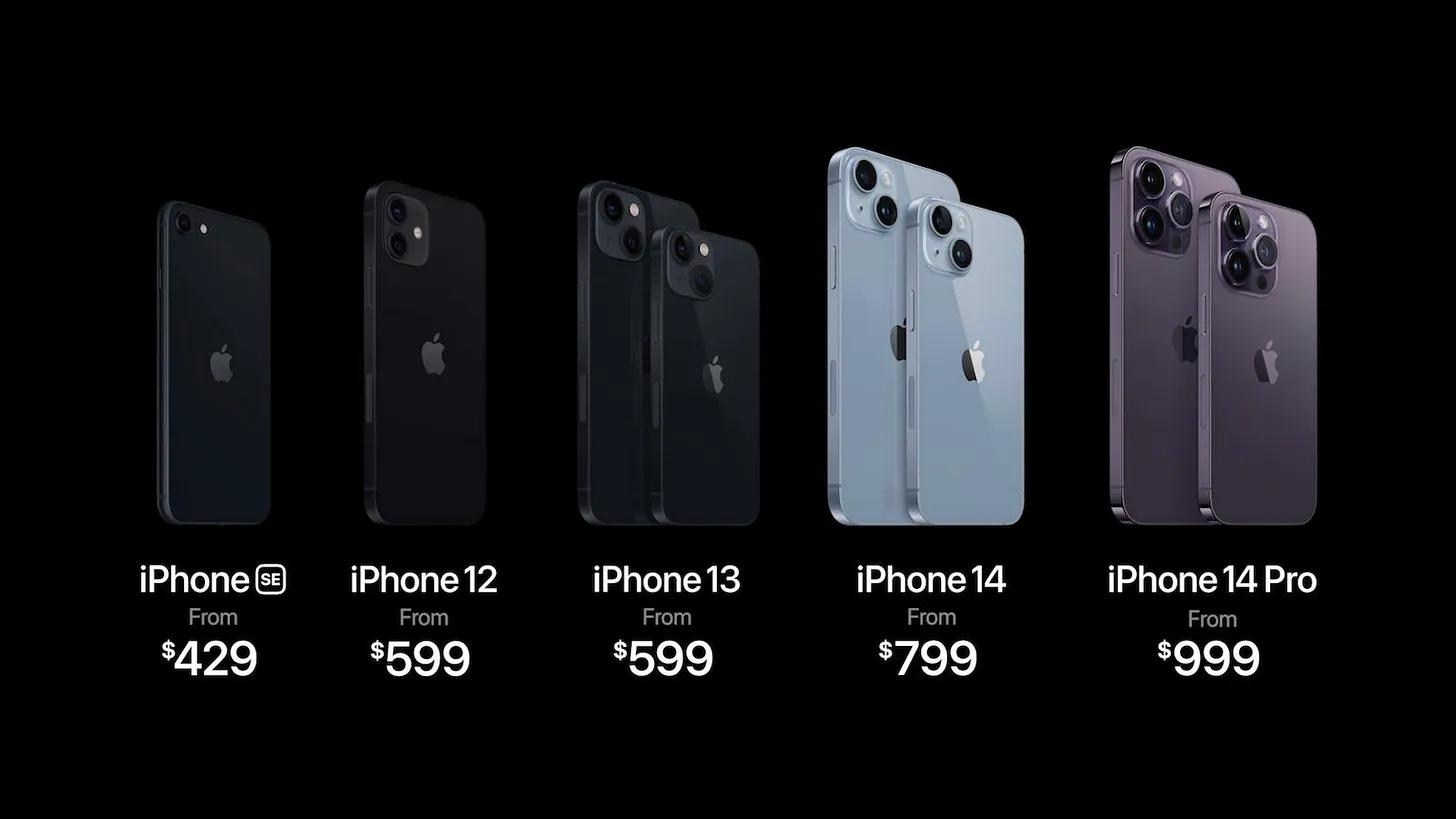I miss Steve. We all do.
When Steve Jobs came back to Apple in 1997, his first step was to simplify. He had come back to a company that was drowning in its own product matrix — a thicket of models, each designed to occupy a different demographic niche, none of which strongly identified what Apple represented. Jobs replaced muddle with focus: four distinct quadrants of products grounded in clarity, craft, and coherence.
Jump ahead to 2022, and Apple’s products — least of all the iPhone — are a distant echo of that simplicity. Apple under Tim Cook is many things: disciplined, streamlined, hugely successful. But it is also increasingly complicated. It is impossible to compare Cook with Jobs himself, but it’s instructive to compare philosophies. Visit Apple.com today, and you’ll find the most bewildering iPhone lineup in Apple’s history. It’s hard to know where to begin.

The top-of-the-line is the iPhone 14 Pro — “the ultimate iPhone,” according to Apple. Two models that are the same size with identical features and as much power as you can handle. It’s the simplest part of the lineup and the only one that still feels explicitly thought through.
Then we have the iPhone 14 Plus: larger screen, larger battery life, fewer flagship perks. It makes sense as a pitch — a large-screen iPhone that doesn’t come with large-screen iPhone prices — but it doesn’t pan out in practice. 60Hz screen and last-gen processor for $899 is a compromise that Apple once denied it would send down the pipe.
The iPhone 14 is nearly identical to its predecessor, the iPhone 13. It’s $799 for pretty much the same phone with a different nameplate attached to it. And Apple is still pitching not only the iPhone 13 mini, but even the iPhone 13, and now even going so far as pitching the iPhone 12.
There are different models for hitting different price points, but no narrative for the lineup as a whole. The mini is for a small but loyal segment of enthusiasts. The 13 and 12 are stuck in a Jimmy Carter-esque middle ground as a remnant of segmentation over simplicity as brand strategy. And then there is the iPhone SE — a $429 phone with last-gen design and a screen that would have felt middling in 2016.
If you’re a new iPhone buyer in 2022, good luck making sense of it all. The distinctions between models are too subtle for most customers to care about, yet Apple insists on filling every imaginable gap between $429 and $1,099. It’s the antithesis of the clarity that once defined Apple’s product design.
Cook’s philosophy is to keep it plain: he’s aiming to produce an iPhone that is within every budget, region, and marketplace segment. It’s a grand ideal — one that’s turned Apple into the most successful company on planet Earth. There’s a compromise involved in that, however: If you create a product that is good enough for everybody, then you may create one that is no longer special to anybody in particular.
If Jobs were still among us, I can assure you he would again begin from ground zero. His perfect iPhone lineup would actually be:
- iPhone Ultra – $1,099. 6.7-inch ProMotion display, Dynamic Island, USB-C, complete-camera system, 2TB storage, and all other flagship. The actual “Pro.”
- iPhone – $799. 6.1-inch ProMotion display, identical design aesthetic, USB-C, slightly reduced-sized cameras, and a single TB of storage.
- iPhone mini – $599. Dual cams, 5.4-inch screen, no Dynamic Island, latest chip. Compact, zippy, sophisticated.
Apple’s phones that retail for $799 and $899 still have a 60Hz display in a world where midrange Android phones long since comfortably passed that mark. Apple is not competing on specs anymore, but it must deliver on context. At that price point with an iPhone, it must be unmistakably premium. It is not with that phone today.
To be fair, there are signs of change. Reports suggest Apple is rethinking its iPhone strategy for 2025 and beyond. The “Ultra” model has become its own tier, the “Plus” appears on its way out, and Apple’s long-awaited consolidation around USB-C has finally arrived. Slowly, the chaos is receding.
But to those of us who lived through Jobs’ Apple — both the man, of course, but attitude as well — this lineup of iPhones is a contradiction. The company that once prided itself on saying no now says yes to nearly every price point.
He once explained Apple’s philosophy as “making the whole widget.” It was a phrase that meant everything Apple made, from hardware to software through product vision, was held together with a single conception. When you consider today’s lineup of iPhone devices, that conception seems dispersed — still gorgeous, still mighty, but a bit fuzzier. Perhaps that’s what I miss most. Not Steve himself, of course, but that attention he commanded—authenticity wasn’t just a design principle, it was a moral one.

A great piece
maye i am breaking every rule by suggesting this but I love the pro and hate the big size of 6.7 so I love having both sizes and if the SE was replaced by a mini I think it would be perfect but I think the price has to be 499 to start with. no 32gb option and the PRO or ULTRA should start at 256GB at the very least if not 512gb